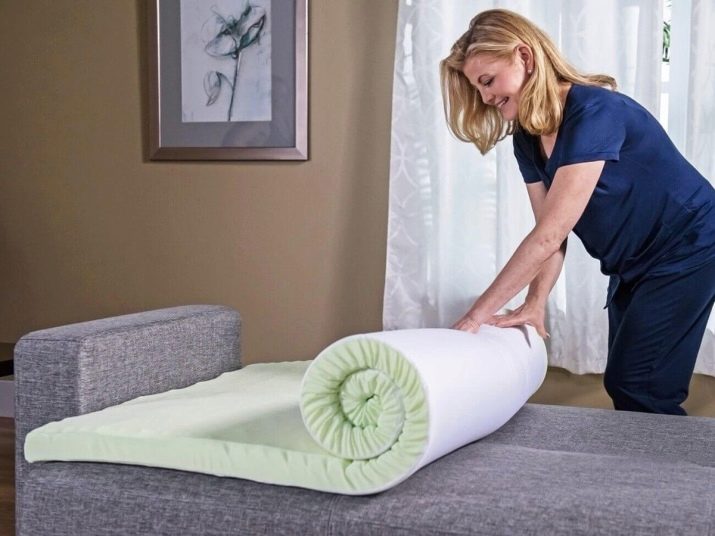What are thin mattresses and how to choose them?
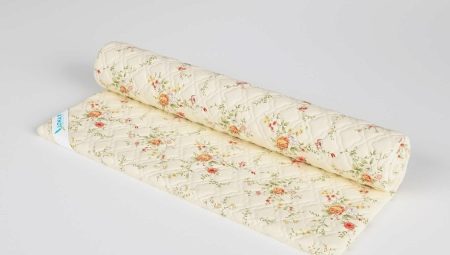
Thin mattresses (toppers) are products from 2 to 10 cm thick. They can be used as a standalone sleeping accessory or as an addition over a regular mattress, so their other name is mattress toppers. You will learn all about the features, types, nuances of choosing thin mattresses from this article.
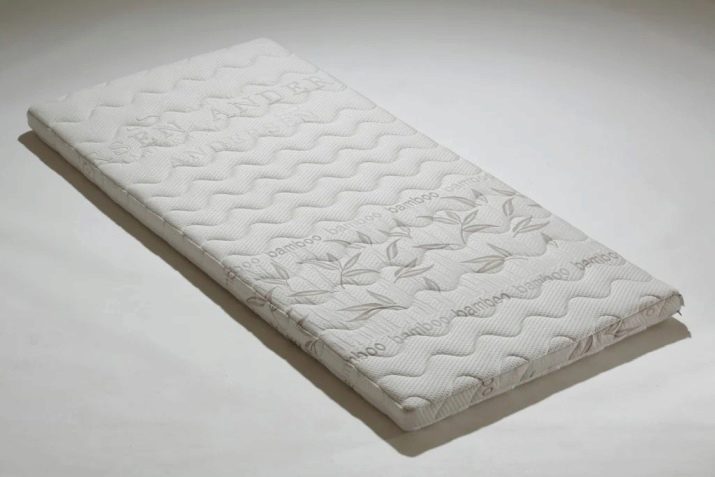
Peculiarities
Toppers are products with the same fillers as stationary mattresses. They can differ in terms of softness and orthopedic properties. Almost all mattress toppers have a protective cover that is easy to remove and wash. And so that the topper does not slip and does not get lost, it is supplied with elastic bands or fabric loops, with which it is attached to the main mattress.
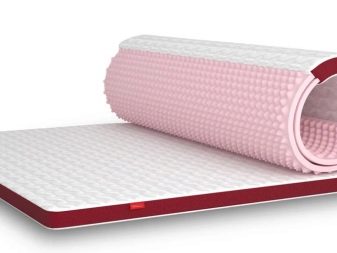
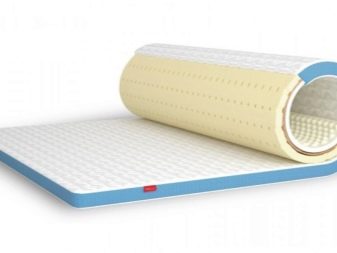
The main difference between thin mattresses and ordinary ones is the thickness, as well as the absence of springs. And thanks to this, the toppers are lighter: they weigh only 1-10 kg, while a thick mattress weighs more than 20-90 kg. Therefore, thin mattresses have the following set of advantages.
- Possibility of withdrawal. Unlike heavy stationary mattresses, thin models can be lifted even with one hand, can be easily removed for ventilation, placed where needed or removed when there is no need for a mattress topper.
- Compactness. Many models can be rolled or folded so they can be easily stored in a closet.
- No transportation problem: twisted topper fits in the trunk or in the back seat of a car. For transportation, you do not need a special car and loaders.
- Easier to change bedding and mattress cover. No need to lift the thick main mattress.

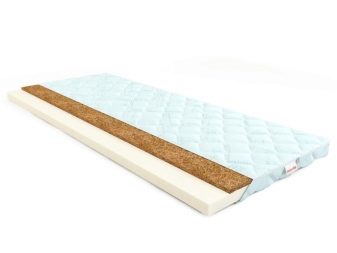
Thanks to their practicality, the mattress toppers are suitable for a wide variety of situations.
- You can take it with you on trips, hikes and business trips. Toppers are very popular with tourists.Also, many take them with them when they go to visit with an overnight stay.
- If guests come to you, then a thin mattress will make it easy to arrange a comfortable sleeping place on the sofa in the living room or even on the floor. There is less fuss with it than with the inflatable version, and it is more comfortable to sleep on it. And then it will be easy to put it in a closet or pantry.
- The topper will help extend the life of your main mattress or sofa upholstery. To prevent the main expensive mattress from getting dirty and not perforated, you should put a topper on it, which will take on all the dirt and protect the mattress from the claws of pets. It is easy to remove the cover from the topper for washing, and the thinnest models of the mattress covers themselves completely fit into the washing machine.
- When the mattress or sofa is pressed down, bulging springs, irregularities, distortions in height are felt, causing inconvenience, and there is no opportunity to replace the product, then you can lay a topper on top that will correct surface imperfections.
- If you just want to change the rigidity of the berth (to make it softer or harder), then it is not necessary to change the main mattress. It is enough just to put a topper on top with the desired properties. If a therapeutic effect is required, an orthopedic mattress cover can be used.
- If people with different weights or different ideas of comfort sleep in the same bed, then everyone can easily create the necessary rigidity on their half of the bed with the help of a mattress topper.
- The thin mattress can be used as a pad for yoga, sports or for children to play on the floor, especially during the cold season.
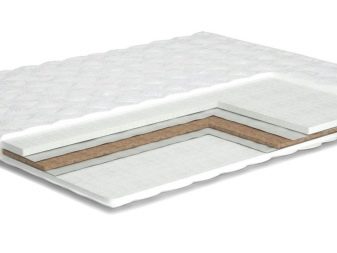
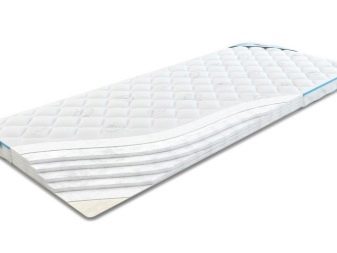
Thus, choosing the right thin mattress will make your sleep more comfortable and help make life easier in many situations. And thanks to the smaller thickness, even premium toppers will cost less than stationary mattress models.
Species overview
Toppers differ in thickness, filling, type of construction, purpose.
By product type
By type of product, mattress covers are of the following types.
- Curling. Thin soft fabric mattresses can be rolled into a compact roll that will fit in your closet or car trunk.
- Foldable. Consist of several sections that allow them to be folded like an accordion book. Some folded models can be used as an ottoman.
- Rigid awkward. If models made from rigid materials (such as coconut coir) are not divided into sections, they cannot be folded.
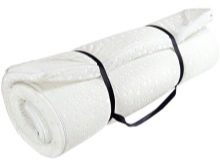
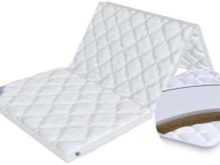
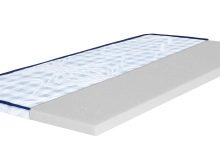
According to the presence of an orthopedic effect, thin mattresses are divided into two groups.
- Orthopedic. They are made of special materials (memory foam, coconut coir) and have a special design that ensures the anatomically correct position of the spine and body during sleep.
Thanks to the optimal distribution of the load on the muscles, sleeping on such a topper is more comfortable than on a regular one. Recommended for healthy children and adults for the prevention of back diseases, and for those who already have problems, they are suitable for relieving symptoms.
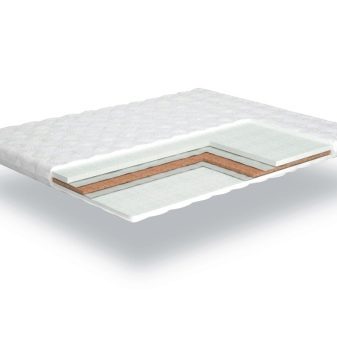
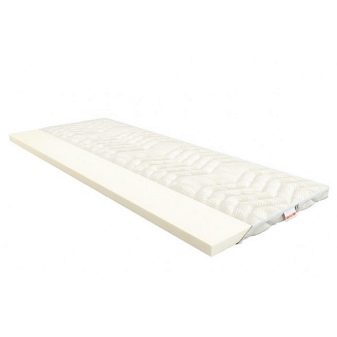
- Regular. Their design does not provide for a special orthopedic effect. Since one of their functions is to protect the surface of the main mattress, the second name of such models is protective.
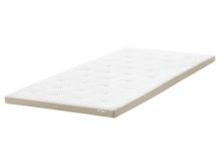
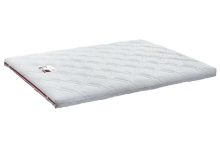
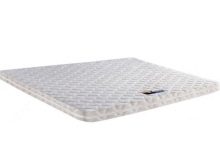
Orthopedic and protective toppers usually vary in thickness. To provide orthopedic support, the mattress should have a thickness of 5 cm, while for a protective model, 2-3 cm is enough.
By filler
The properties of the mattress depend on the filler: rigidity, the presence of an orthopedic effect, the weight that it can withstand, the possibility of twisting and washing.
Therefore, for a comfortable sleep and convenient use of the topper, it is very important to choose the right filler.
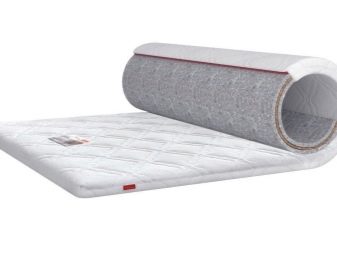
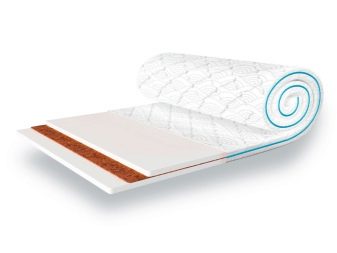
For thin mattresses, the following types of fillers are used.
- Natural latex (foamed rubber). An environmentally friendly material obtained from a natural component - the sap of the Hevea tree. Toppers made of it are elastic, with a slight springy effect, usually of medium hardness, with anti-allergenic and antibacterial properties. Withstands a lot of weight (up to 120 kg).Very durable.
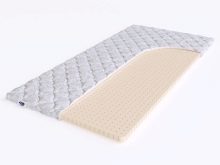
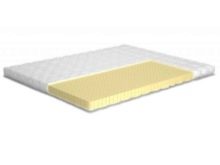
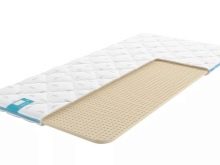
- Synthetic latex. Polymer material, one of the varieties of polyurethane foam. The elasticity is close to natural latex. But it wears out much faster - in 3-5 years. Its main advantage is its low price.

- Coconut coir. Eco-friendly material, it is a vegetable fiber extracted from coconut shells. For stuffing mattresses, the fiber is used in a compressed form, so the products are quite tough. Withstands weight up to 120 kg. To improve the properties of the product, coconut coir is sometimes impregnated with latex. Usually mattresses with coconut coir are firm.
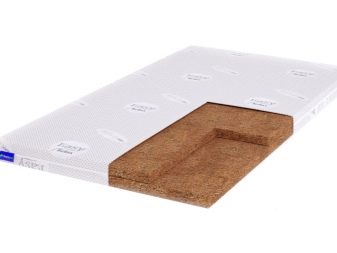
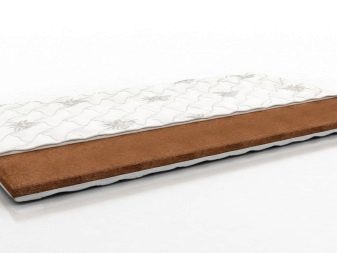
- Polyurethane foam (PPU). Elastic polymeric foam with a honeycomb structure. There are quite a few varieties with different properties and indicators of density and elasticity, which allows you to create both soft and hard mattresses. Dust mites will not start in the filler. The polyurethane foam mattress keeps warmth. This is great for tourists, but it can be hot to sleep on such a mattress indoors.
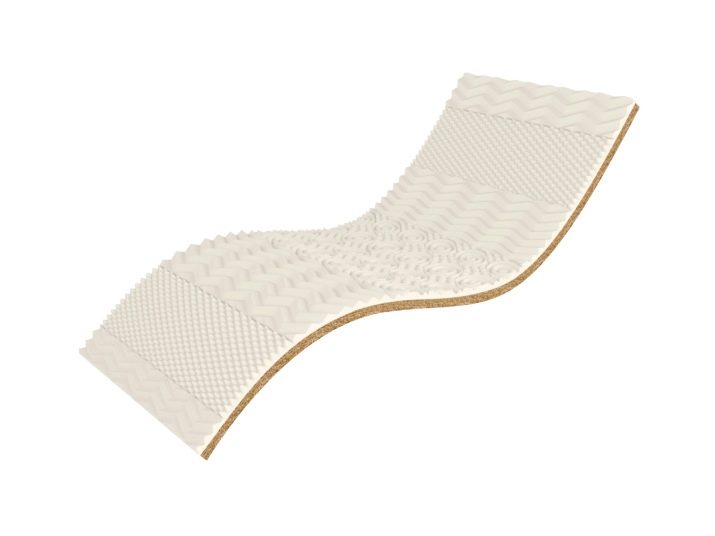
- Memory Foam (memorix). This is a new generation of polymer foams with improved properties compared to conventional PU foam. The main features are memory effect and excellent orthopedic properties. Heat exchange is also improved here: it is pleasant to sleep on such a mattress both in winter and in summer. Withstands a lot of weight and serves for a long time, is safe and hypoallergenic.
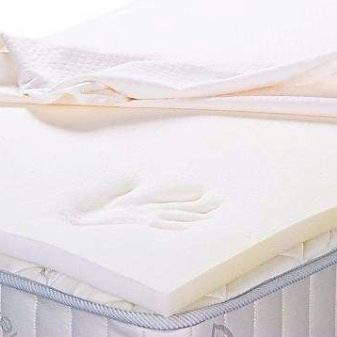
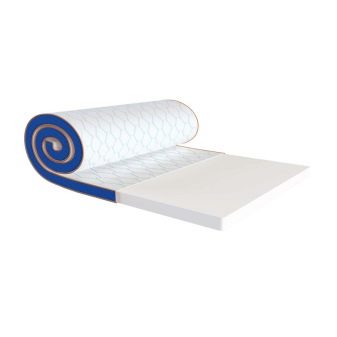
- Structofiber, holofiber and holcon. Synthetic fabrics made from flexible polyester threads, bonded at high temperatures. They differ in the direction of the fibers. In the holcon it is vertical, in the struttofiber, the layers of vertically arranged fibers alternate with horizontal ones. The twisted elastic threads work like many small springs, giving elasticity to the materials.

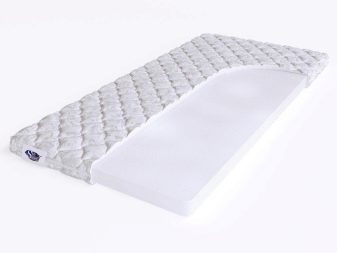
- Wool. Natural material, however, it is quite "hot" and causes allergies in some. In modern mattresses, it is usually used not as the main filler, but as an additive or layer for the winter side of products with the "winter-summer" effect.
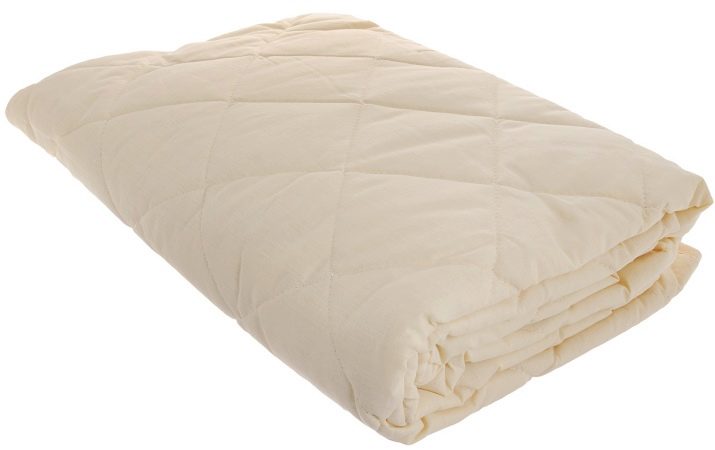
- Cotton wool. It is a soft budget cotton-based filler. It is inferior in practicality and durability to modern synthetic counterparts (for example, holofiber), but it copes well with the task of increasing the softness of the berth for little money.
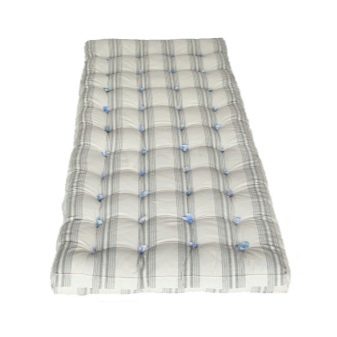
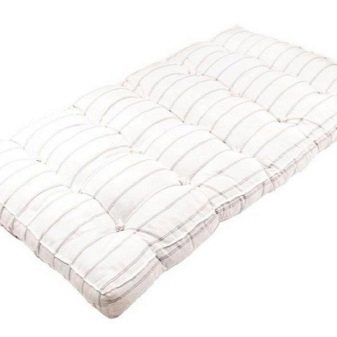
The variety of materials used to make mattresses allows you to create models with any characteristics and for any budget.
By hardness
Stiffness is an important factor in choosing a mattress topper. It can be different and depends mostly on the filler. Sometimes, to achieve the desired effect, several layers of one or more different materials are used.

In terms of hardness, thin mattresses are of the following types.
- Soft. It easily bends under the influence of the body and, as it were, envelops it, providing a comfortable sleep. Such products are felt with a density of 25-30 kg / m3 and a hardness of 10-15 kPa. This category includes mattresses made of memorix, soy foam, cotton wool and soft polyurethane.
- Medium hard, moderately hard. Bends moderately under body weight, feels firm, with a springy effect. These are toppers made of natural and artificial latex, elastic polyurethane, holcon, struttofiber.
- Hard. Practically does not buckle under the weight of the sleeper, it keeps its shape perfectly. Such properties are possessed by products made from coconut coir.
- Combined. The front and back sides of such a mattress have a different level of rigidity due to the use of different fillers. Such a topper can be turned over to the appropriate side depending on the mood or preferences of the sleeper.
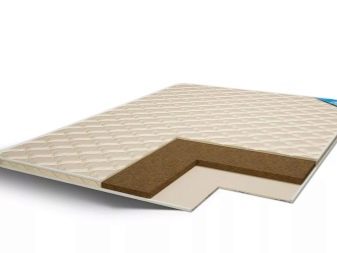
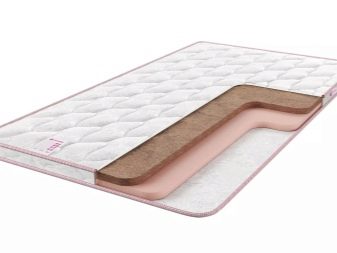
Dimensions (edit)
The height of the toppers ranges from 2 to 10 cm. Models, the main task of which is to protect the main mattress from dirt, usually have one filler layer and a small height - 2-3 cm. They have a minimal effect on the rigidity of the berth, although irregularities on the sofa are quite capable of smoothing out. But the thinnest mattress covers cannot provide full orthopedic support.For this, models are already needed from 5-8 cm, depending on the weight of the sleeper. The thicker the mattress, the better it performs orthopedic functions. Premium models of orthopedic mattress toppers are 8-10 cm thick.
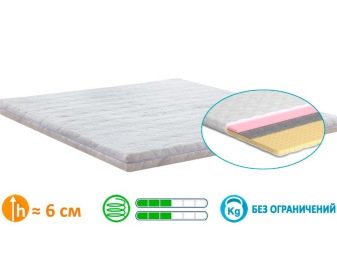
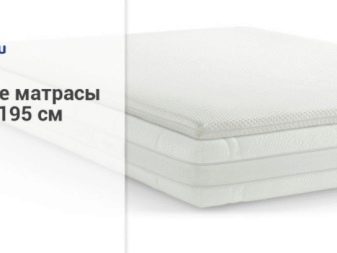
Medium thickness toppers (4-5 cm) are popular with tourists and those who often move or purchase a mattress for guests.
Such products are affordable, compact, while providing little orthopedic support and warmth, excellent sleeping comfort on the couch, on the floor or even on the ground.
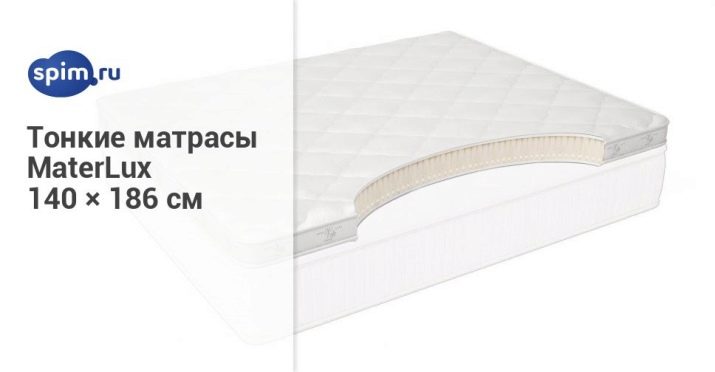
As for the length and width, the toppers, like stationary mattresses, are produced for the typical sizes of beds and sofas. Moreover, different manufacturing countries may have their own standards. Therefore, if a mattress cover is chosen for a specific bed, you need to carefully select the dimensions. Standard adult mattresses are available in 190, 195, 200 cm long.
- Universal single models are toppers with a width of 80 or 90 cm. Typical sizes - 90x190, 90x195, 90x200, 80x190, 80x195, 80x200 cm. Due to their compactness, such products are convenient to take on trips and hikes, to use for arranging a temporary bed.
- Models for a single bed have a width of 120 cm: 120x190, 120x195, 120x200 cm. Also, such products are well suited for children's games on the floor.
- The double models are 140, 160, 180 and 200 cm wide. The most popular mattresses are for small (140x190, 140x200 cm) and medium (160x190, 160x200 cm) double beds. Products 180x190, 180x200, 200x200 cm are produced for large family beds.
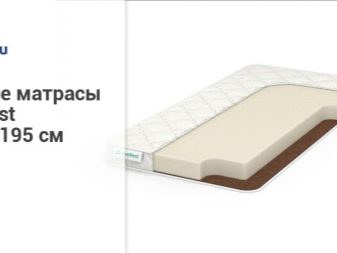
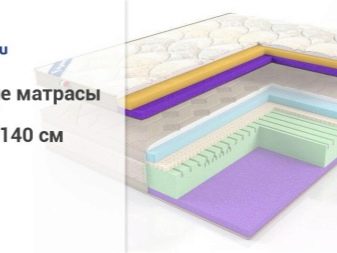
Special toppers are available for cots. For the smallest (up to 3 years old) mattresses have dimensions 60x120, 70x120, 80x120, 75x125cm. There are special models for prams and cribs for newborns.
For adolescents, experts recommend choosing special orthopedic models of medium or high rigidity made of latex, the design of which takes into account the peculiarities of age and contributes to the correct development of the musculoskeletal system.... The sizes of these mattresses are 70-90 cm wide and 150-190 cm long.
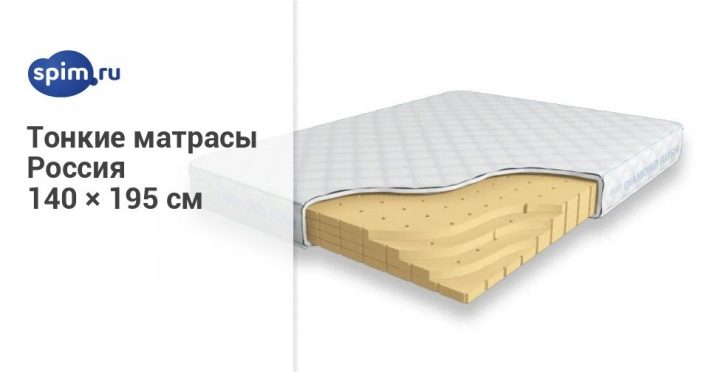
The range of most manufacturers is not limited to products with standard sizes. So, on sale you can find toppers with dimensions of 150x200, 150x190 100x200, 190x80 cm and others. Round mattresses are becoming more and more popular. The diameter of such products is usually between 150 and 230 cm.
A wide range of sizes allows you to choose a topper for any berth.
And if you need a product of a completely non-standard shape, many manufacturers are ready to make a mattress according to individual measurements.
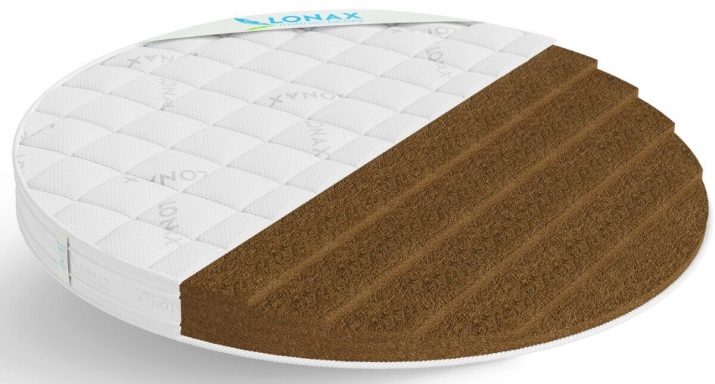
Top manufacturers
The top leaders in the thin mattress market are led by the following companies.
- Tempur. Danish company, a leader among manufacturers of sleep products. It manufactures products filled with intelligent elastic memory foam, which is based on NASA's design for spacesuits. It is the only industry organization officially permitted to use the NASA Certified Space Technology mark. Offers premium orthopedic flexible toppers. The line includes models with a thickness of 3.5, 5 and 7 cm. The products are certified as medical in the USA, Europe, and Russia.
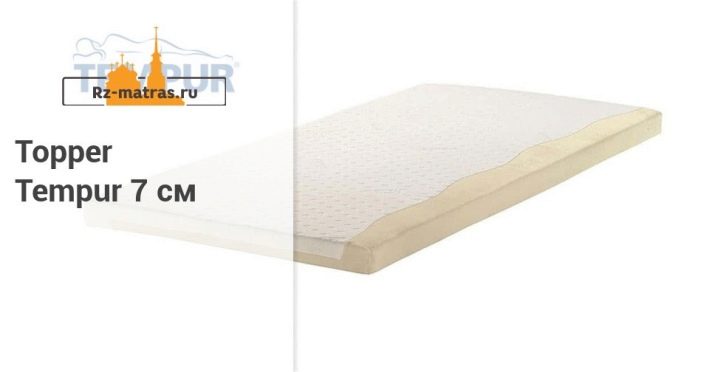
- LIEN`A. One of the world's best manufacturers of orthopedic mattresses and natural latex pillows. The plant is located on the largest hevea plantation in Vietnam. The company is a member of the international association of manufacturers of sleep products ISPA, the products have European safety certificates ECO-Institut, LGA. In Russia, these are certificates of the Ministry of Health. The product line includes a variety of models of latex mattress toppers in standard and round shapes with a thickness of 3, 5, 7.5, 10 mm.
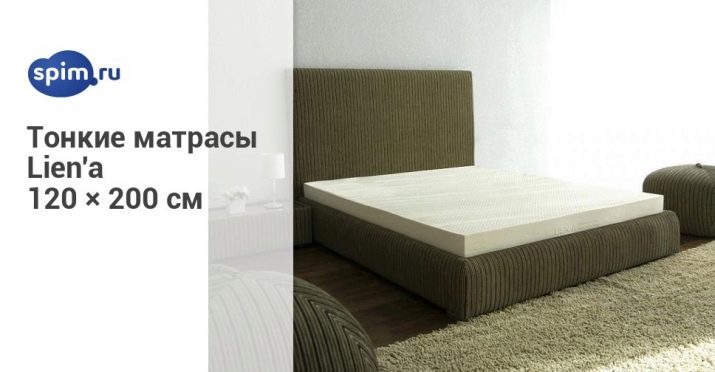
- Ascona. The leader among Russian manufacturers of sleep products. Has been on the market for 29 years. For the manufacture of products, the most modern materials are used, the range is constantly updated and replenished with new developments.Customers will be pleased with a large selection of products, among which there are more than 10 names of toppers: both protective and orthopedic, with memory effect, in different sizes, thickness from 2 to 7 cm. There are children's and adult models for any budget: from premium to the most inexpensive.
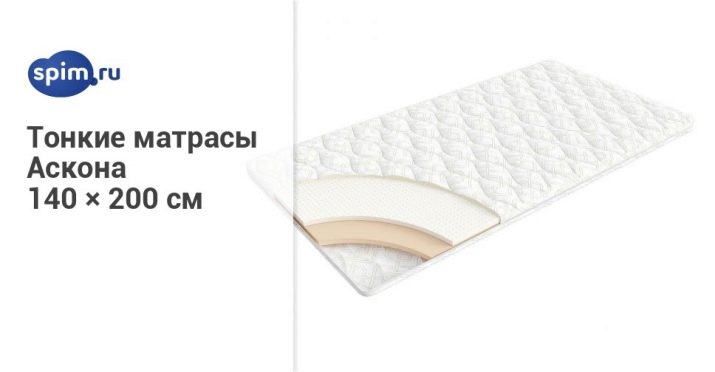
Such Russian companies as Ormatek, Trelax, Promtex-Orient, Sontel Senator, Consul, DreamLine, Toris have also proven themselves well. Inexpensive products of good quality are also produced under the popular IKEA brand. Among the foreign companies producing premium toppers, the Italian company Magniflex should be noted.
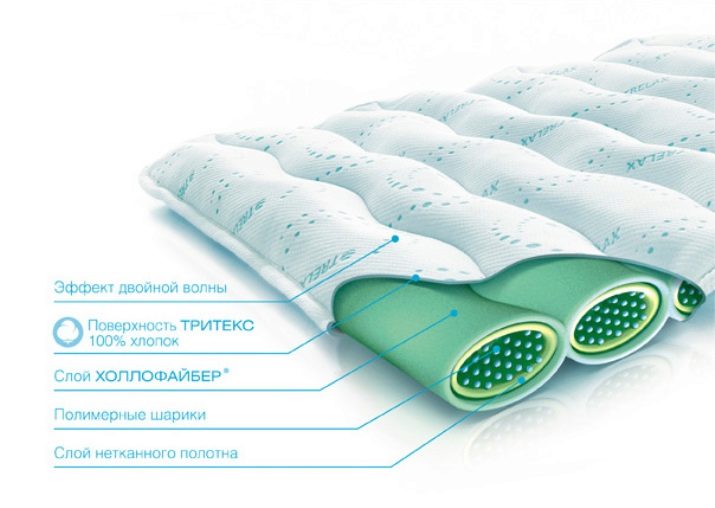
Nuances of choice
Mattress covers can be used for a wide variety of tasks. However, there are some general guidelines to help you choose the right product and enjoy excellent comfort and sleep quality.
- The length of the mattress should be 10-15 cm longer than your height. After all, if the mattress is too small, it will be uncomfortable to sleep even on the best orthopedic surface.
- The weight of the user must be taken into account. The larger it is, the thicker the mattress must be to provide support. Each mattress model has its own maximum permissible weight specified by the manufacturer, and this must be taken into account. If the mattress is double, the weight is determined by the heaviest partner.
- If you need an orthopedic effect, it is recommended to choose a mattress topper with a thickness of 5 cm or more.
- You should think about how the mattress topper will be stored and how to care for it. There are models that can be machine washed, rolled up (for example, thin models from holofiber, holcon). And there are those that in no case should be washed or twisted (products from coconut coir).
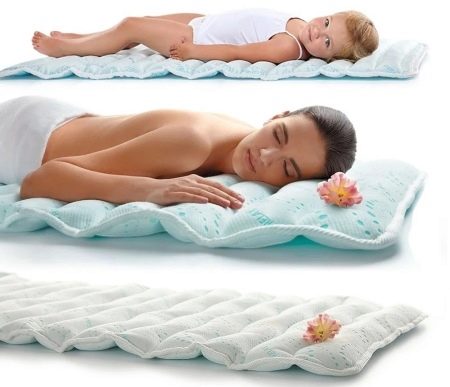
Based on the tasks, choose a filler: soft or hard. Contrary to popular stereotype, sleeping on a hard bed is not good for everyone. In fact, it strongly depends on the individual characteristics and structure of the body, state of health, age.
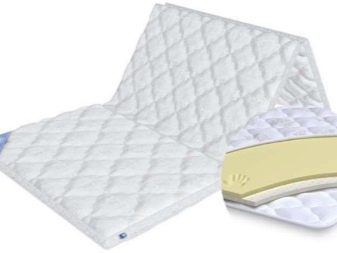
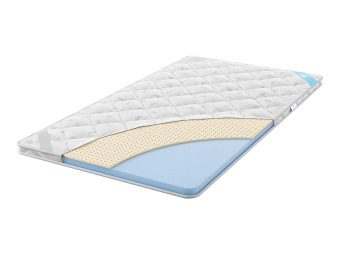
Experts give the following recommendations in this regard.
- Children, adolescents and young adults under 25 are advised to sleep on hard or medium-hard mattresses.
- People over 50 should choose soft or medium-soft models (sleeping on a too hard mattress may cause problems with intervertebral discs).
- For middle-aged people (25-50 years old) without serious diseases of the musculoskeletal system, any mattress is suitable, depending on individual preferences. Products of medium hardness or from orthopedic memory foam are considered optimal. A special table will help you choose the most correct model depending on the ratio of height and weight.
- Overweight people are better off preferring rigid models.
- In the presence of diseases of the musculoskeletal system, injuries, it is imperative to consult a doctor, because the parameters of the mattress in this case are selected individually. As a rule, in case of problems with intervertebral discs (hernia, etc.), soft orthopedic models are recommended, in case of poor posture, osteochondrosis - hard ones.
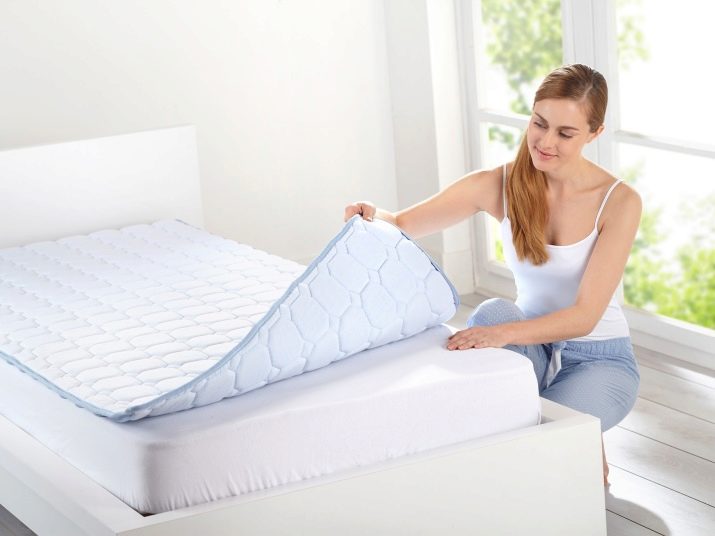
Since the firmness of the mattress is a very subjective factor, it is advisable to test the mattress before buying. To do this, the stores provide the opportunity to touch the demo samples and even lie on them.
Also, during the "test drive" you should check the quality and reliability of the fasteners. Cover materials should be pleasant to the touch and preferably natural, not causing allergies and skin irritation.
